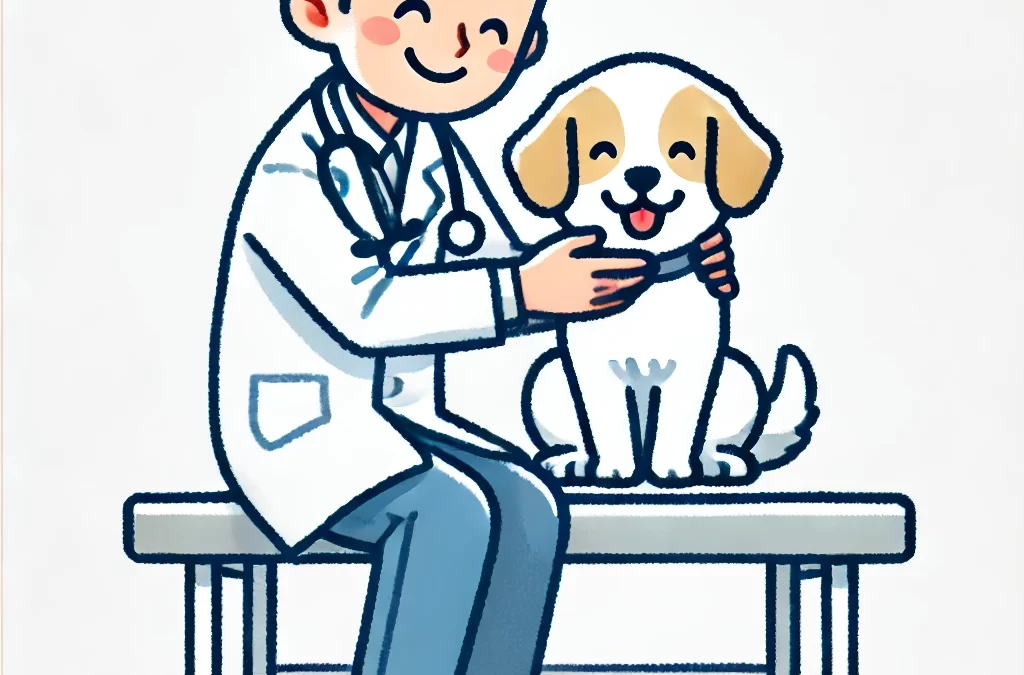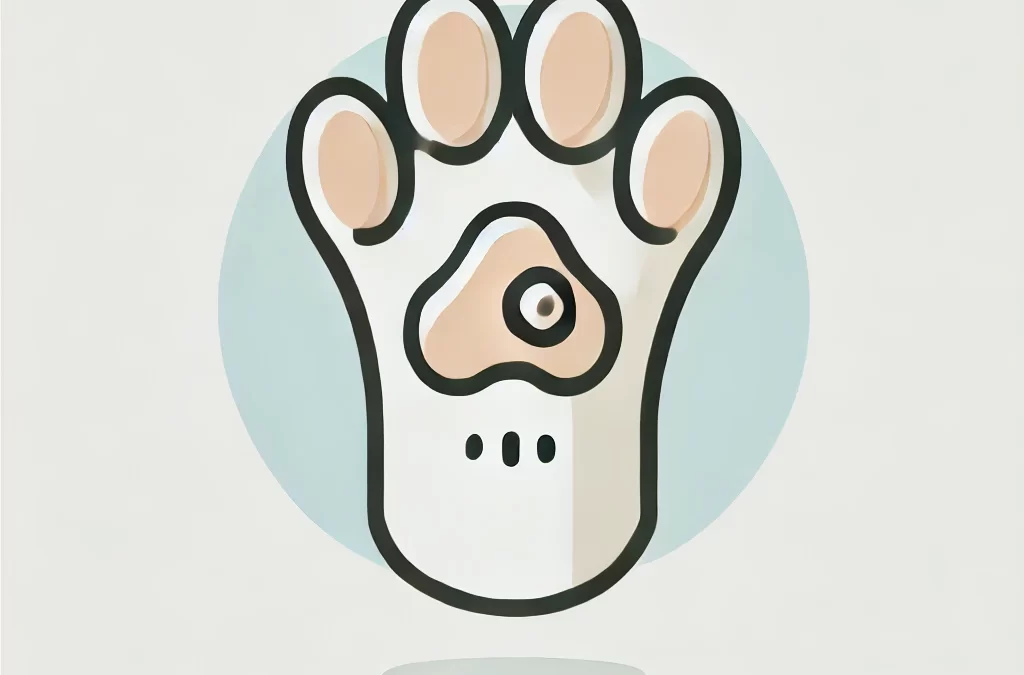
執筆者 TCMVET | 2024年11月30日 | 犬の癌と腫瘍
愛犬が癌と診断されると、まるで足元が崩れたように感じます。しかし、絶望の真っ只中にも、犬の癌は必ずしも即死宣告ではないと信じるペットの飼い主、ホリスティック療法士、研究者の運動が広がっています。適切な治療法、食事、ライフスタイルの変更を組み合わせることで、癌の進行を遅らせることができ、愛犬が飼い主と一緒に人生を楽しむ時間をより多く与えることができます。
犬の健康をサポートし、癌細胞の増殖を遅らせる方法についての新たな視点をご紹介します。
1. 伝統医学を超えて考える
犬のがん治療では化学療法と手術が標準的な治療法ですが、多くの飼い主は犬の免疫力を高め、全体的な健康状態を改善することに重点を置いた補完療法を求めています。従来の治療法と自然療法や代替療法を組み合わせた統合医療が近年注目を集めています。
鍼治療、マッサージ、ハーブ療法などの療法は、炎症を軽減し、痛みを和らげ、犬の全体的な生活の質を向上させるのに役立ちます。 カンナビノイド例えば、CBD はいくつかの研究で痛みの管理や腫瘍の成長抑制に効果があることが示されています。代替療法を始める前に必ず獣医に相談してください。しかし、より多くの選択肢が登場しているのは心強いことです。
2. 栄養の力を活用する
犬に与える食べ物が犬の健康に影響を与えるという考えが盛んに取り沙汰されています。これにはガンと闘う能力も含まれます。犬にガンに効く食事を与えるということは、単に健康的な食べ物を与えるということだけではありません。体内にガン細胞が繁殖しにくい環境を作ることも重要です。
一部の栄養士は、 ケトジェニックダイエット がんを患っている犬には、脂肪分が多く、タンパク質が中程度で、炭水化物が少ない食事が適しています。このタイプの食事は、がん細胞の成長に必要な糖分を奪い、進行を遅らせる可能性があります。 抗がんスーパーフード ウコン、キノコ類(シイタケ、マイタケ、霊芝)、緑茶エキスなども効果があります。
亜麻仁やその他の植物に含まれるリグナンという化合物は、犬の癌細胞の成長を遅らせる効果があるとされており、特に犬のリンパ腫の場合に効果があると言われています。獣医に相談してみるのも良いかもしれません。 サプリメント のように オメガ3脂肪酸、抗酸化物質、ビタミン D などが含まれており、これらはすべて免疫機能を維持し、健康な細胞の再生をサポートする役割を果たします。
3. 運動と精神刺激:運動と休息のバランス
犬が癌と診断されたら、できるだけ休養をとるべきだと考えるのは簡単です。しかし、人間と同じように、休息と活動のバランスを保つことで、犬の身体を最適な状態に保つことができます。定期的に、負担の少ない運動をすると、血行が良くなり、痛みが軽減し、犬の免疫システムをサポートできます。
精神的な刺激も同様に重要です。インタラクティブなおもちゃ、トレーニングセッション、または匂いゲームで犬の心を刺激すると、犬の精神的健康が高まり、人生に対する全体的な見通しが向上します。より幸せでストレスの少ない犬は、がんがもたらす困難にうまく対処できる可能性が高くなります。
4. 全体論的アプローチ:心と体のつながり
人間とペットの両方において、がん治療でしばしば見落とされがちな側面の 1 つは、心と体のつながりです。ストレスと不安は免疫システムを弱め、がん細胞が繁殖しやすい環境を作り出します。したがって、穏やかでストレスのない環境を育むことは、犬の健康にとって不可欠です。
考慮する 瞑想の実践 または、家の中に犬が安心してリラックスできる聖域を作ることもできます。これには、心地よい音楽を流したり、家の静かな場所に居心地の良いベッドを作ったり、ペットに安全なエッセンシャル オイルを使ったアロマセラピーなどが含まれます。これは、犬の体が病気と戦うために可能な限り最高の状態になるようにするための、小さいながらも強力なステップです。
5. 最先端の研究と実験的治療法
私たちは、がん治療に関する医学研究が急速に進歩している刺激的な時代に生きています。犬のがん治療の状況はまだ進化していますが、次のような有望な新しい治療法がいくつかあります。 免疫療法 そして 遺伝子治療これらの最先端の治療法は、犬自身の免疫システムを活性化させてがんとより効果的に闘うことを目的としており、従来の方法よりも正確に腫瘍を標的とします。
最新の治療法や臨床試験に精通している専門家に相談して、情報を入手し、愛犬のために尽力してください。がんの進行を遅らせ、生活の質を向上させるために、まだ広く利用されていない治療法を愛犬に提供できる可能性があります。
6. 愛と慈悲の力
犬の癌治療において最も重要でありながら、しばしば過小評価されている側面は、愛と感情的なつながりの治癒力です。飼い主の存在、気遣い、世話は犬にとって大きな安心感となり、不安やストレスを軽減し、免疫システムのより効果的な機能に役立ちます。
大切なのは、食べ物や薬、治療法だけではありません。飼い主と飼い主が共有する絆です。この絆は、犬に戦う力、生きる喜び、そしてどんなことがあっても深く愛されているという安心感を与えてくれます。
結論: 一歩ずつがんの進行を遅らせる
犬の癌は間違いなく壊滅的ですが、進行を遅らせ、犬の健康をサポートする方法はたくさんあることを覚えておくことが重要です。現代の獣医治療と代替療法、適切な栄養、運動、精神的なケアを組み合わせることで、犬の生活の質に大きな違いをもたらすことができます。
道のりは長いかもしれませんが、総合的なアプローチと愛犬の健康に対する深い献身があれば、愛犬がより充実した幸せな生活を送れるように手助けすることができます。愛犬の人生は癌によって決まるのではなく、あなたが毎日与える愛情とケアによって決まるのです。

執筆者 TCMVET | 2024年11月29日 | ペットの漢方薬
犬用の自然療法といえば、リシマキア 3 はホリスティック獣医ケアの注目の的となっています。このハーブ配合は、長年実証された伝統の中国医学 (TCM) に根ざしており、犬の健康をサポートする潜在的な効果、特に膀胱結石、尿路の問題、炎症の管理で注目を集めています。この記事では、リシマキア 3 が犬の健康維持の陰の立役者となる理由について、独自の視点から解説します。
Lysimachia 3 とは何ですか?
リシマキア 3 は、中医学では「三黄粉」とも呼ばれ、3 種類の強力な生薬をブレンドしたものです。
- リシマキア(金銭曹): 解毒作用と結石溶解作用があることで知られています。
- タンポポ(普公英): 天然の抗炎症剤および利尿剤。
- オオバコ(チェ・チエン・カオ): 尿路の健康をサポートし、炎症を和らげます。
この3種類のハーブは相乗的に作用し、膀胱の健康に対処し、炎症を軽減し、全体的な健康を促進します。
犬にリシマキア 3 を検討する理由は何ですか?
症状の管理に重点を置くことが多い医薬品とは異なり、Lysimachia 3 は健康問題の根本原因に対処するように設計されています。このアプローチは、自然で優しく効果的な解決策を求めるペットの飼い主の間で高まっている傾向と一致しています。
リシマキア3のユニークな用途
1. 膀胱結石と結晶
リシマキア 3 は、膀胱結石を溶解し、尿結晶の形成を防ぐ効果があることで知られています。結石を砕く性質があるため、繰り返し排尿の問題を抱える犬にとって優れた代替品となります。
2. 尿路感染症
リシマキア 3 は抗菌作用と抗炎症作用があるため、尿路感染症 (UTI) の症状を緩和するのに役立ちます。尿路を鎮静化し、治癒を促進し、不快感を軽減します。
3. 解毒
リシマキア 3 は、肝臓と腎臓による毒素の排出をサポートします。特に環境毒素や長期の投薬にさらされている犬にとって、デトックス プロトコルに貴重な追加成分となります。
リシマキア3を犬に安全に使用する方法
- 獣医に相談する: Lysimachia 3 を導入する前に、必ず漢方薬に詳しい獣医師に相談してください。投与量は犬のサイズ、健康状態、および特定のニーズによって異なります。
- 粉末またはカプセル: ハーブは、粉末として食べ物に混ぜて摂取することも、利便性のためにカプセルの形で摂取することもできます。
- Monitor for Reactions副作用はまれですが、消化不良やアレルギー反応の兆候がないか犬に注意してください。
古代療法の現代ルネッサンス
合成薬が主流の時代に、リシマキア 3 のようなハーブ処方の復活は、その永続的な価値の証です。現代の研究は、古代の医師が何世紀にもわたって知っていたことを実証し始めています。つまり、自然には健康のための強力な解決策があるということです。
例えば:
- 成功事例犬の飼い主は、排尿時の痛みの軽減から膀胱結石の完全な解消まで、ペットの症状が大幅に改善したと報告しています。
- 従来の医療との相乗効果Lysimachia 3 は従来の治療法を補完し、その有効性を高め、抗生物質への依存を軽減します。
犬にリシマキア3を与えるべきタイミング
リシマキア 3 は、膀胱や排尿の問題を抱える犬だけのためのものではありません。ダルメシアンやブルドッグなど、そのような症状を起こしやすい犬種の予防策としても使用できます。さらに、膀胱の手術や慢性の尿路感染症から回復中の犬にも最適な選択肢です。
リシマキア 3 はあなたの犬に適していますか?
リシマキア 3 は、犬の膀胱と尿の健康を管理するための自然で総合的な選択肢として際立っています。独自のハーブブレンドは、症状だけでなく根本的な原因にも対処し、現代のペットの飼い主の自然なケアへの好みに合った包括的なソリューションを提供します。
手術以外の方法を探している場合でも、慢性的な問題に対処している場合でも、あるいは単に愛犬の健康を高めたい場合でも、リシマキア 3 はあなたの愛犬に必要なハーブの味方となるでしょう。豊かな歴史と実証された効能を持つこの古代の治療法は、犬の健康のための現代的な解決策として脚光を浴びています。

執筆者 TCMVET | 2024年11月29日 | 犬の癌と腫瘍
犬の腫瘍診断による精神的および経済的負担に直面した多くの飼い主は、治療にかかる費用に圧倒されてしまいます。しかし、適切なリソースと少しの創造性があれば、低コストで犬の腫瘍を除去することは可能であるだけでなく、実現可能です。このガイドでは、財布に負担をかけずに愛犬に必要なケアを確実に受けさせるユニークで実用的な方法を紹介します。
腫瘍の種類と切除の必要性を理解する
すべての腫瘍がすぐに外科的介入を必要とするわけではありません。脂肪腫(良性の脂肪腫瘍)など、犬の健康にほとんどまたはまったく脅威を与えない腫瘍もあります。獣医師に相談して腫瘍の性質を評価することが、情報に基づいた決定を下すための第一歩です。切除が必要と判断された場合は、費用対効果の高い解決策を検討して問題を解決してください。
手頃な価格で犬の腫瘍を除去するための創造的なアプローチ
獣医学校:学習と貯蓄
獣医教育病院では、経験豊富な専門家の指導のもと学生が手術を行うため、低コストのサービスが提供されることがよくあります。コストが削減されても、ケアの質は高いままであるため、予算を重視するペットの飼い主にとって最適な選択肢となります。
非営利獣医クリニック
多くの非営利団体や動物福祉団体が、腫瘍の除去を含む獣医治療の補助金を提供しています。Humane Society や SPCA 支部など、低所得のペットの飼い主を支援する地域の団体を調べて、経済的援助を受けられるかどうかを確認してください。
クラウドファンディングプラットフォーム
GoFundMe や Waggle などのプラットフォームでは、ペットの飼い主が愛犬のストーリーを共有し、治療費を募ることができます。心のこもったストーリーや写真は、寄付者がペットの健康のために寄付をしてくれるよう促すことができます。
地元の獣医との支払いプラン
一部の獣医クリニックでは、高額な手術に対して分割払いプランを用意しています。このオプションを利用すると、費用を数か月に分割して支払うことができ、当面の経済的負担を軽減できます。
DIY 回復とアフターケア
手術自体は必ず資格を持った獣医師が行うべきですが、自宅で術後のケアを管理することで費用を節約できます。傷口の洗浄方法、投薬方法、犬が快適に回復できるスペースの作り方を学んで、追加の通院を最小限に抑えましょう。
代替策の検討: 手術が選択肢にない場合
手術が経済的に難しい場合や、犬の健康状態により手術が推奨されない場合は、代替療法で腫瘍を管理できます。ホリスティックな選択肢には次のようなものがあります。
- ハーブサプリメント: ウコン、フランキンセンス、川芎などの中医学の処方などの自然療法は、抗炎症作用があることで知られています。
- CBD オイル: フルスペクトル CBD オイルは炎症を軽減し、全体的な健康をサポートする可能性があります。
- 食事の調整: 完全食品、低炭水化物、高タンパク質食品に重点を置いた抗がん食は、腫瘍の成長を遅らせる可能性があります。
将来のコストを回避するための予防措置
予防ケアは、そもそも腫瘍が形成される可能性を減らすことができます。定期的な獣医の診察、バランスの取れた食事、タバコの煙などの発がん物質への曝露を避けることは、犬のより健康的な生活を促進することができます。早期発見が鍵です。小さな腫瘍は、進行した腫瘍よりも一般的に治療が簡単で費用もかかりません。
思いやりと創意工夫:手頃な価格の医療の鍵
犬の腫瘍を除去する低コストの選択肢を見つけるには、機知と決断力が必要です。非営利団体、コミュニティのサポート、代替療法を活用することで、経済的に困ることなく愛犬に必要なケアを確実に受けることができます。あなたの創造性とペットへの愛情が、思いやりのある効果的な解決策への道を切り開くことを忘れないでください。
手頃な価格のケア提供者のネットワークに繋がるにしても、総合的なアプローチを採用するにしても、犬の健康は乗り越えられないほどのコストがかかるものではありません。この旅を通して、ペットと飼い主の揺るぎない絆、つまりあらゆる努力に値する関係を思い起こしましょう。

執筆者 TCMVET | 2024年11月28日 | 犬の癌と腫瘍
愛犬が足を引きずったり、足を過度に舐め始めたりしたら、その原因は趾間嚢胞かもしれません。これはよくある症状ですが、心配な症状でもあります。これらの嚢胞は通常は良性ですが、その見た目から飼い主は「これは癌のようなもっと悪性の兆候なのではないか」と疑問に思うことがあります。このトピックを新鮮な目で掘り下げ、違いや潜在的な関連性、そして愛犬の健康のためにこれらの問題に最もよく取り組む方法を探ってみましょう。
趾間嚢胞とは何ですか?
趾間嚢胞は、犬の足指の間にできる液体で満たされた塊で、フルンクルとも呼ばれます。これは、趾間腔の毛包の炎症によって生じ、多くの場合、以下の原因で発生します。
- Trauma: 足に切り傷や擦り傷がある。
- アレルギー: 環境アレルギーまたは食物アレルギーにより、過度な舐め行動が起こります。
- 遺伝的素因ブルドッグやラブラドールレトリバーなどの特定の犬種は、よりその傾向が強いです。
- 異物: 破片や破片が皮膚に埋め込まれます。
趾間嚢胞は通常は非癌性ですが、再発性のため不快感、感染症、さらには跛行を引き起こす可能性があります。
趾間嚢胞は癌と関係があるのでしょうか?
簡単に答えると、まれではあるが、まったく不可能というわけではない。
趾間嚢胞のほとんどは良性で、癌とは関係ありません。しかし、持続性嚢胞によって引き起こされる慢性炎症は、時間の経過とともにより深刻な状態につながる環境を作り出す可能性があります。この現象は、 慢性炎症による発癌は、長期にわたる刺激が組織の悪性変化のリスクを高める可能性があることを強調しています。
さらに、非常にまれなケースでは、最初は嚢胞と特定されたしこりが、実際には次のようなより深刻なものである可能性があります。
- Squamous Cell Carcinoma (SCC)足の裏や足指の間に発生する可能性のある皮膚がんの一種。
- 肥満細胞腫(MCT)これらの腫瘍は、他の場所にもよく見られますが、足のような珍しい場所に現れることもあります。
- 悪性黒色腫悪性黒色腫は、肉球の近くに現れ、嚢胞のような腫瘍のように見えることもあります。
嚢胞と癌の見分け方
適切な診断が重要です。注意すべき点は次のとおりです。
- 形状と質感嚢胞は通常柔らかく、丸く、液体で満たされています。腫瘍は硬く不規則な感触になることがあります。
- 成長率良性の嚢胞はゆっくりと成長しますが、悪性の腫瘍は急速に成長することが多いです。
- 色と潰瘍: 癌性腫瘍は変色したり、潰瘍ができたり、自然に出血したりすることがあります。
- 治療に対する反応嚢胞は抗生物質、抗炎症薬、または排液に反応することが多いですが、癌性腫瘍は反応しません。
獣医師は、腫瘍が良性か悪性かを確認するために、穿刺吸引細胞診(FNA)や生検などの診断検査を勧める場合があります。
足の健康のための総合的かつ予防的なケア
嚢胞が非癌性であっても、予防と総合的なケアによって犬の生活の質を向上させることができます。
- 足の衛生: 定期的に掃除することで、犬の足に異物が挟まるリスクを軽減できます。
- 食事の調整オメガ 3 脂肪酸と抗炎症サプリメントは炎症を軽減し、肌の健康を促進します。
- Natural Remedies: Products like TCMVET 白頭霄 または、ウコンベースのクリームは再発性嚢胞の炎症を軽減するのに役立つ可能性があります。
- 適度な運動: 外傷を受けやすい活発な犬の場合は、切り傷や擦り傷を避けるために、散歩には柔らかい地面を検討してください。
手術や高度な治療が必要な場合
持続性または複雑な嚢胞の場合、影響を受けた組織を除去するために手術が必要になることがあります。まれに悪性腫瘍が疑われる場合は、がんの拡散を防ぐために影響を受けた足指の切断が必要になることがあります。レーザー手術や凍結療法などの高度な治療法も、特定のケースでは非侵襲的な解決策となります。
まとめ: 知識は力である
趾間嚢胞は一般的で、ほとんどが良性ですが、決して無視してはいけません。注意を怠らず、獣医に相談し、積極的なアプローチをとれば、犬の足の健康を保つのに大いに役立ちます。また、がんの恐れが生じた場合でも、早期発見と最新の治療で有望な結果が得られることを覚えておいてください。
私たちの愛犬は、世話と保護を私たちに頼っています。趾間嚢胞などの病気の微妙な違いを理解することで、愛犬が長く健康で幸せな生活を送るための最善のチャンスを与えることができます。

執筆者 TCMVET | 2024年11月28日 | 犬の癌と腫瘍
愛するペットに腫瘍があると診断されると、精神的に追い詰められるような気分になります。手術は希望の焦点となることがよくありますが、それが常に最善の選択肢なのでしょうか? ペットの腫瘍手術の変革の過程、状況を変える代替手段、そしてホリスティックケアが私たちの愛するペットの癒しをどのように再定義しているかを探ってみましょう。
歴史的視点:命を救う手術
獣医学の初期の頃は、腫瘍に対する決定的な治療法は手術でした。技術の進歩により、レーザー手術やロボット支援などの技術が一般的になり、手術はより安全で正確になりました。たとえば、今日のペットの腫瘍手術では、腫瘍を除去しながら健康な組織を温存し、わずか 1 ミリメートルのマージンを実現できます。
しかし、外科手術にはリスクがないわけではありません。ペットの年齢、腫瘍の大きさや位置、基礎にある健康状態などの要因がすべて成功率に影響します。腫瘍の除去には効果的ですが、手術は症状のみに対処するもので、根本的な原因に対処するものではありません。
代替案: 選択肢の拡大
手術は依然として基礎的な手段ですが、代替アプローチも注目を集めています。
- 凍結療法極度の低温を利用して腫瘍細胞を凍結・破壊するこの方法は、侵襲性が低く、表面的な腫瘍に最適です。
- 標的療法免疫療法や分子標的薬などの獣医学の革新により、非外科的腫瘍管理が可能になりつつあります。これらの治療は、腫瘍を縮小するか、進行を遅らせることを目的としています。
- 自然療法: ハーブ療法のような TCMVET 白頭霄 麻ベースのサプリメントは、副作用を最小限に抑えながら免疫システムをサポートし、腫瘍の成長を抑制する能力があるため、人気が高まっています。
- 緩和ケア: 手術不能な腫瘍を持つペットにとって、快適さが最優先となります。痛みの管理、食事の調整、理学療法は、生活の質を維持する上で重要な役割を果たします。
決断を検討する: 削減するか、削減しないか?
手術か代替療法かの選択は、複数の要因によって決まります。
- 腫瘍の種類良性腫瘍の場合はすぐに手術を行う必要はありませんが、悪性腫瘍の場合は迅速な処置が必要になることがよくあります。
- 生活の質: この処置によってペットの健康状態が改善される可能性はありますか、それとも過度のストレスや痛みを引き起こす可能性がありますか?
- オーナーの目標: 寿命を優先する飼い主もいれば、快適さと総合的なケアを重視する飼い主もいます。
ペットの独自のニーズを考慮したカスタマイズされた治療計画を確実に立てるためには、獣医腫瘍専門医との相談が不可欠です。
ホリスティックヒーリング:メスを超えて
手術後のケアは手術そのものと同じくらい重要です。回復計画には、総合的な方法が取り入れられることが多くなってきています。
- 栄養療法抗酸化物質、オメガ 3 脂肪酸、抗がん化合物を豊富に含む食事が極めて重要です。
- 鍼灸とマッサージこれらの療法は痛みを和らげ、血行を促進し、治癒を早めます。
- 心の支え: ペットも人間と同様、回復中はストレスのない環境から恩恵を受けます。充実した時間を過ごしたり、優しく遊んだり、日課を維持したりすることで、ペットの気分は高揚します。
ペット腫瘍手術の未来
獣医腫瘍学の分野は急速に進化しています。AI 誘導診断や 3D プリント手術ツールなどのイノベーションにより、さらに正確で効果的な介入が可能になります。さらに、ペットの腫瘍の遺伝的基礎に関する研究により、予防戦略への道が開かれています。
こうした進歩が進むにつれ、ペットの腫瘍手術をめぐる見方は、恐怖から希望へ、反応的なケアから積極的なケアへと変化しています。
最後に
手術を選択する場合でも、代替手段を検討する場合でも、最終的な目標は常に同じです。ペットに可能な限り最高の生活を与えることです。思いやり、情報に基づいた意思決定、最先端のケアへのアクセスがあれば、私たちはこの困難な時期を乗り越え、一緒により強くなることができます。
腫瘍の診断に直面したとき、あなたはペットの擁護者であり、最大の擁護者であることを忘れないでください。あなたが下すすべての決定は愛から来るものであり、それがすべてを左右します。





